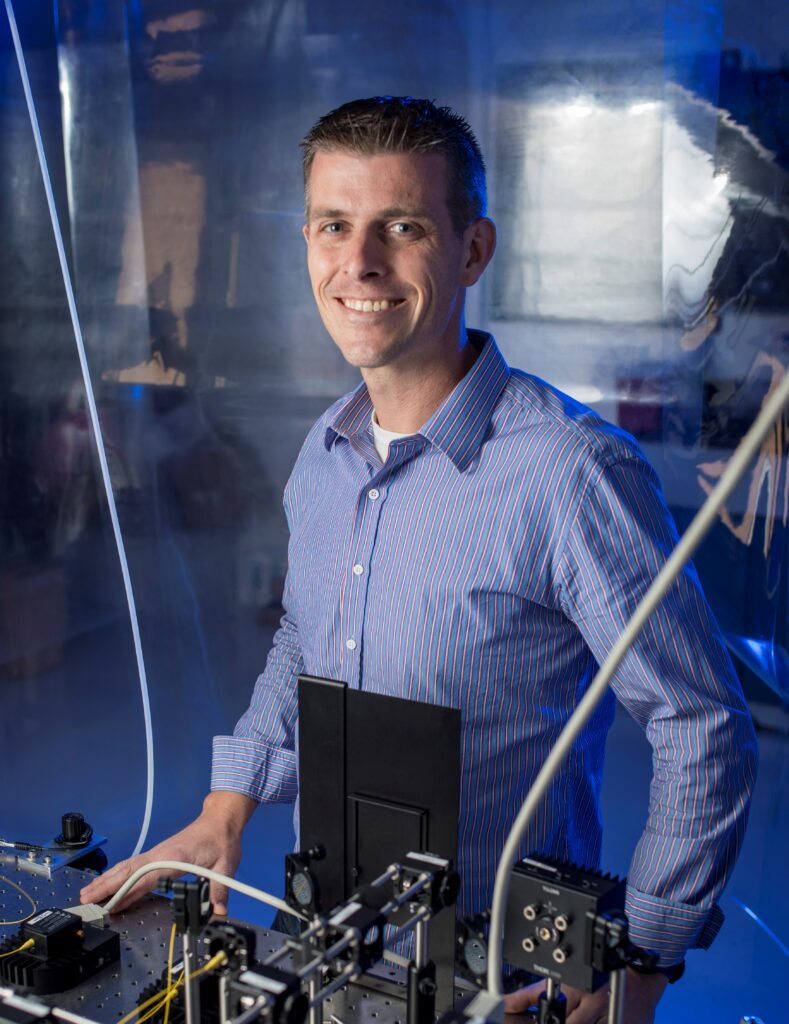Professor of Mechanical Engineering and
Abstract
The field of nanophotonics is based on the ability to confine light to sub-diffractional dimensions. In the infrared, this requires compression of the wavelength to length scales well below that of the free-space values. While traditional dielectric materials do not exhibit indices of refraction high enough in non-dispersive media to realize such compression, the implementation of polaritons, quasi-particles comprised of oscillating charges and photons, enable such opportunities. Two predominant forms of polaritons, the plasmon and phonon polariton, which are derived from light coupled with free carriers or polar optic phonons, respectively, are broadly applied in the mid- to long-wave infrared. However, the short scattering lifetimes of free-carriers results in high losses and broad linewidths for the former, while the fast dispersion and narrow band of operation for the latter result in significant limitations for both forms. Through strong coupling strategies once can overcome some of these limitations by imparting benefits of both, as well as realizing emergent properties not existent in either individual material. Within anisotropic materials, these optical modes can be induced to propagate with different wavevectors along different axes, or even be restricted to propagate only along a single direction. Here, we discuss the influence of strong coupling and crystalline anisotropy in dictating the polaritonic dispersion, including recent observations from our group highlighting highly directional so-called hyperbolic shear polaritons in low-symmetry monoclinic and triclinic crystals, strong-coupling between optical modes for infrared emitters and laser concepts, as well as the ability to control the wavelength and propagation direction of these modes using free-carrier injection and twist-optic concepts. Further, we highlight how phonon polaritons can be employed as ultrafast and efficient carriers of thermal energy, providing alternative dissipation pathways for heat.
Biography
Joshua Caldwell is a Professor of Mechanical Engineering and Director of the Interdisciplinary Materials Science Graduate Program at Vanderbilt University. He was awarded his Bachelor of Chemistry from Virginia Tech in 2000 and a Ph.D. in Physical Chemistry in 2004 from the University of Florida. He accepted a postdoctoral fellowship at the Naval Research Laboratory in 2005, using optical spectroscopy as a means of understanding defects within wide-band gap semiconductors, and then transitioned to permanent staff in 2007, where he began work in the field of nanophotonics, investigating coupling phenomena within plasmonic materials. He merged his work in wide band gap semiconductors and nanophotonics, leading to his efforts exploiting polar dielectric crystals for low-loss, sub-diffractional infrared optics. He was awarded a sabbatical at the University of Manchester with Prof. Kostya Novoselov in 2013-2014, investigating the use of van der Waals crystals such as hexagonal boron nitride for mid-IR to THz nanophotonics, where he demonstrated the natural hyperbolic response of this material. In 2017 he accepted a tenured Associate Professorship at Vanderbilt University within the Mechanical Engineering Department, was named Director of the IMS program in 2021 and promoted to Full Professor in 2022. He is a Fellow of the Materials Research Society, a 3-time recipient of the NRL Nanoscience Institute Grants, a 4-time recipient of the NRL Alan Berman Best Pure Science Paper Award, the 2014 Thomas Edison Best Patent Award, the Vanderbilt Chancellor’s Award for Research (2022). He is a recipient of a FY23 MURI Award exploring twist-optics and has published over 180 papers receiving >11,000 citations, 11 patents, and is co-founder and CEO of Sensorium Technological Laboratories.

 Monday, November 6, 2023 – 5:30 PM
Monday, November 6, 2023 – 5:30 PM